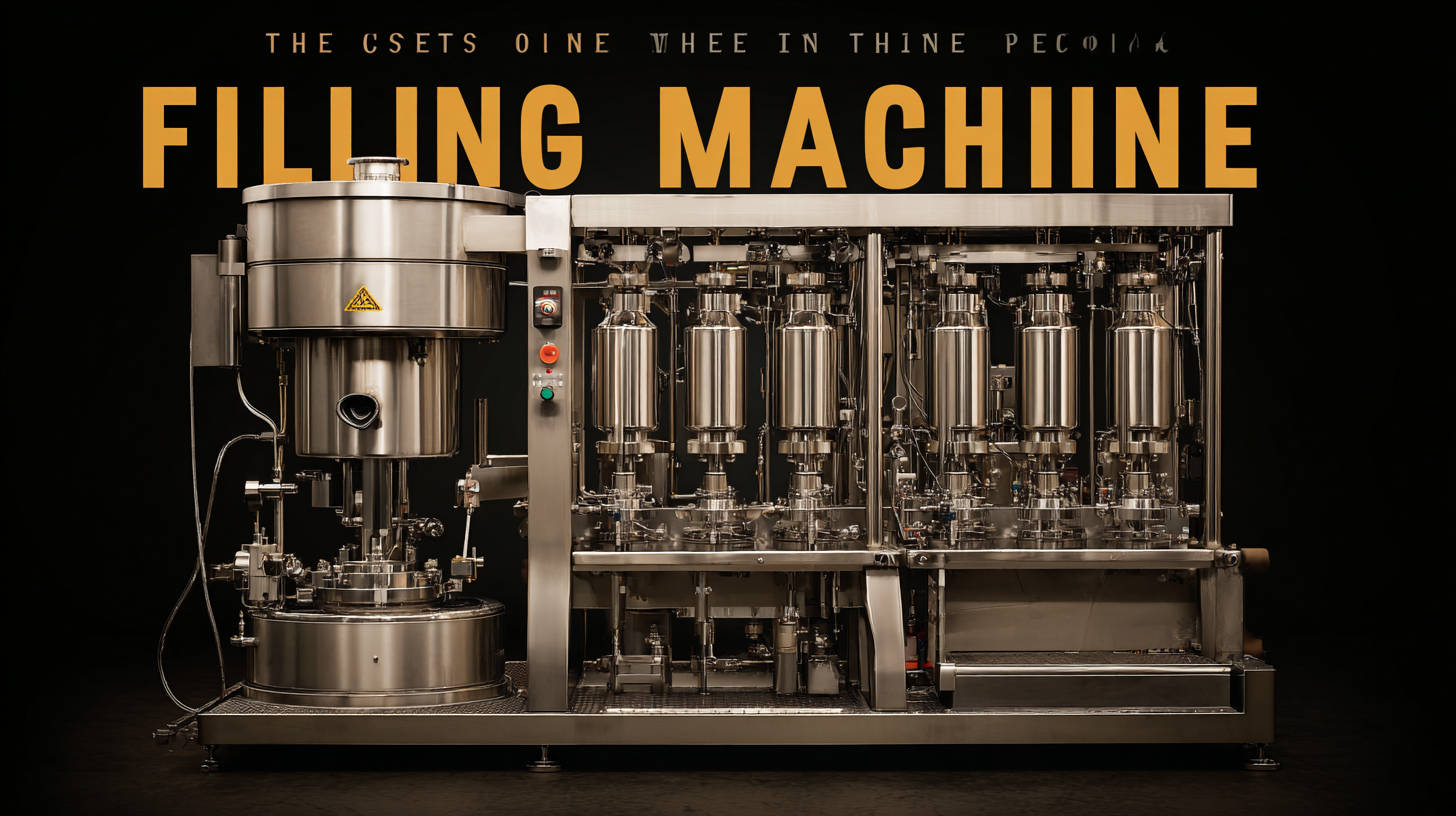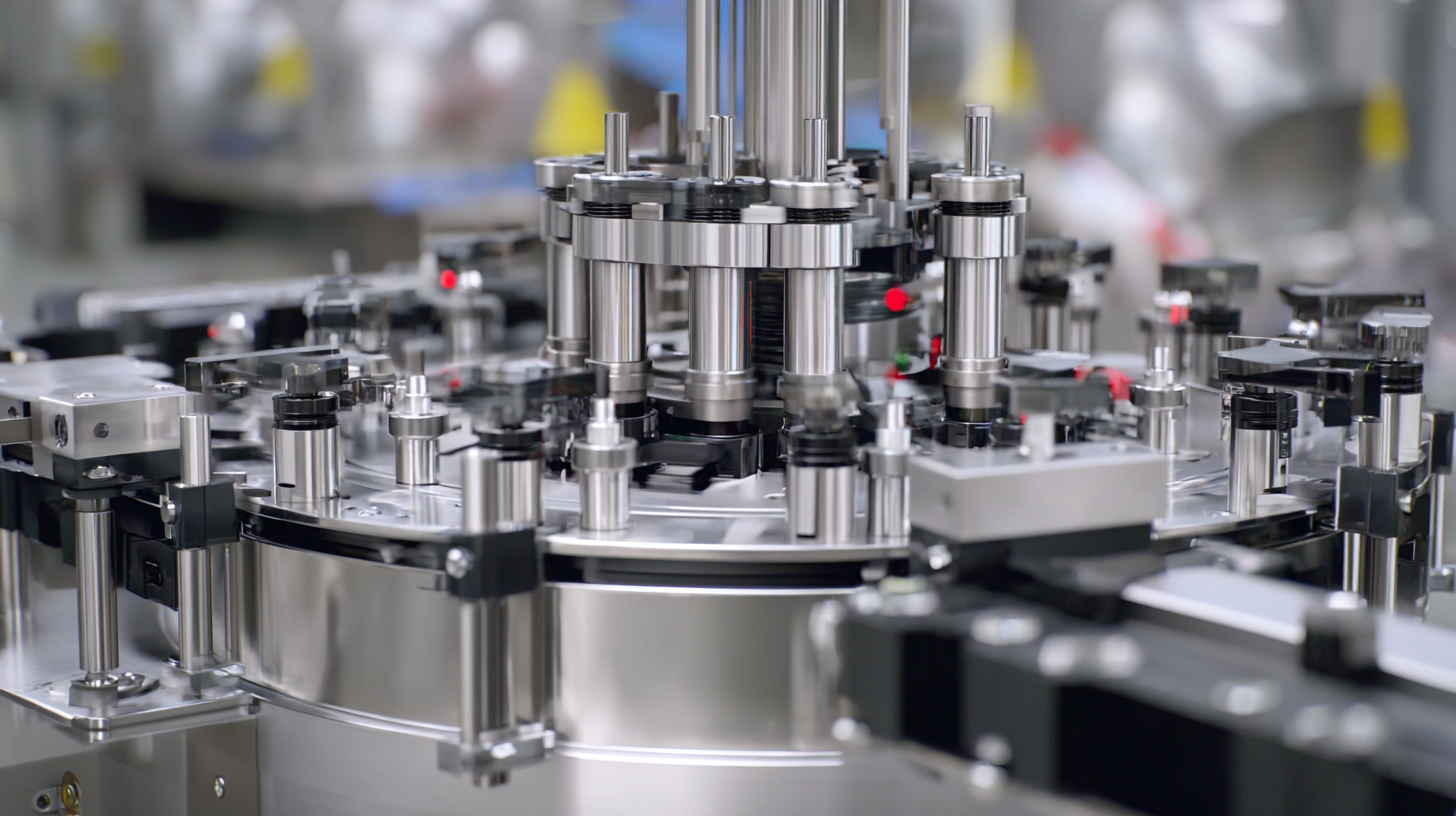The Ultimate Guide to Choosing the Best Filling Machine for Your Production Needs
In today's competitive global market, the importance of selecting the right filling machine cannot be overstated, especially for manufacturers striving to uphold the mantra "Made in China, Win the World's Respect." The filling machine is a pivotal component in the production line, as it directly influences product quality, efficiency, and overall operational success. With countless options available, understanding the specific needs of your production process becomes crucial.

This guide is designed to help you navigate the complexities of choosing the best filling machine tailored to your production requirements. By considering factors such as product viscosity, container types, and production speed, manufacturers can make informed decisions that enhance productivity and maintain high standards of quality that satisfy both domestic and international markets.
Understanding Different Types of Filling Machines for Various Industries
When selecting the best filling machine for your production needs, it's essential to understand the various types available across different industries. The global liquid filling machines market, valued at USD 8.7 billion in 2023, is projected to grow at a CAGR of over 7.6% through 2032. This growth is driven by the increasing demand for automation in manufacturing processes, particularly in sectors such as food and beverage, pharmaceuticals, and cosmetics.
In the food and beverage industry, filling machines must cater to diverse products, from liquids to solids. For instance, the North American market for food and beverage filling and capping machines is expected to expand significantly by 2030, highlighting the importance of selecting equipment suitable for your specific product type. Additionally, aseptic filling machines are gaining momentum, particularly with the rising consumption of FMCG and pharmaceutical products.
Tip: When choosing a filling machine, consider factors such as product viscosity, container type, and required speed. Understanding these elements will help you identify whether you need an automatic or semi-automatic machine.
Tip: Always evaluate the market trends and forecasts. For example, the pharmaceutical packaging equipment market is expected to grow at a CAGR of 7.5%, indicating a robust future for filling machines in this sector. Make informed decisions based on these statistics to ensure adaptability in your production line.
Key Technical Specifications to Consider When Choosing a Filling Machine
When choosing a filling machine for your production needs, it is crucial to consider key technical specifications that directly impact efficiency and effectiveness. First, assess the machine's capacity and speed, as these will determine how well the machine can meet your production demands. For example, a filling machine that can handle higher volumes is essential for businesses with significant output requirements, while speed capabilities can help optimize workflow and reduce bottlenecks.
Additionally, the type of filling technology is another important technical specification. Options include volumetric, gravimetric, and time-based fillers, each suited for different types of products and packaging. Understanding your product's viscosity and packaging needs will guide you in selecting the most appropriate technology. Furthermore, consider the machine's compatibility with automation systems and data transparency features. As modern production environments increasingly rely on smart machinery and integrated automation, ensuring that your filling machine can communicate effectively with other systems is vital for maintaining operational efficiency.

How to Assess Production Capacity and Speed for Efficient Operations
When selecting the best filling machine for your production needs, assessing production capacity and speed is crucial for optimizing operational efficiency. According to the latest report by Grand View Research, the global liquid filling machine market is projected to reach USD 4.27 billion by 2025, with a compound annual growth rate (CAGR) of 6.5%. This growth indicates a rising demand for machines that not only enhance capacity but also maintain speed—two factors that directly impact productivity.
Evaluating the production capacity involves understanding the volume of product you intend to fill and how often. For instance, a high-speed liquid filling machine can reach a throughput of up to 100 bottles per minute, significantly reducing downtime and meeting the requirements of large-scale operations. Incorporating advanced technologies, such as automated adjustment systems, can further streamline the filling process. Reports from MarketsandMarkets highlight that manufacturers are increasingly investing in these technologies to achieve greater accuracy and speed while minimizing product waste. By analyzing these dynamics, businesses can make informed decisions on the most suitable filling machine to align with their specific production goals.
The Ultimate Guide to Choosing the Best Filling Machine for Your Production Needs
| Filling Machine Type | Production Capacity (Bottles/Hour) | Filling Speed (Seconds/Bottle) | Ideal For |
|---|---|---|---|
| Semi-Automatic Filling Machine | 300 - 600 | 3 - 5 | Small to Medium Businesses |
| Fully Automatic Filling Machine | 1000 - 3000 | 2 - 4 | Large Scale Production |
| Piston Filling Machine | 500 - 1500 | 5 - 7 | Viscous Liquids |
| Gravity Filling Machine | 400 - 1200 | 4 - 6 | Thin Liquids |
| Flow Meter Filling Machine | 600 - 1800 | 3 - 5 | Beverages and Chemicals |
Evaluating the Cost-Effectiveness of Filling Machines for Your Business
 When evaluating the cost-effectiveness of filling machines for your business, it's crucial to consider not only the initial investment but also the long-term savings they can offer. According to a report by MarketsandMarkets, the global filling machine market is projected to reach $5.3 billion by 2025, indicating a robust demand driven by various industries. Investing in a high-quality filling machine can significantly reduce operational costs by minimizing product spillage and enhancing production speed, thus improving overall profitability.
When evaluating the cost-effectiveness of filling machines for your business, it's crucial to consider not only the initial investment but also the long-term savings they can offer. According to a report by MarketsandMarkets, the global filling machine market is projected to reach $5.3 billion by 2025, indicating a robust demand driven by various industries. Investing in a high-quality filling machine can significantly reduce operational costs by minimizing product spillage and enhancing production speed, thus improving overall profitability.
Tip: Always factor in the maintenance and servicing costs when assessing a filling machine's total cost of ownership. A machine with lower upfront costs may end up being more expensive in the long run if it requires frequent repairs or parts replacement.
Additionally, consider the energy efficiency of filling machines. A study from the Department of Energy suggests that high-efficiency machinery can reduce energy consumption by up to 30%. This not only helps in cutting down electricity bills but also aligns with sustainable practices, making your business more appealing to eco-conscious consumers.
Tip: Look for machines that offer advanced automation features. Automating the filling process can boost efficiency and accuracy, ultimately leading to higher production rates and lower labor costs.
Maintenance Tips to Ensure Longevity and Performance of Filling Equipment
Maintaining your filling equipment is crucial for achieving optimal performance and longevity. Regular upkeep not only ensures consistent operation but also prevents costly downtime. One of the best maintenance tips is to establish a routine cleaning schedule. Depending on the type of filler and the materials used, routines can range from daily to weekly cleanings. Be sure to use the appropriate cleaning agents that won't damage the machine components.
Another important tip is to regularly inspect and replace worn-out parts. Components such as seals and nozzles can wear out over time and affect the filling accuracy. Keeping an inventory of spare parts and conducting monthly inspections can help you identify issues before they escalate into major problems. Additionally, calibrating your filling machine periodically ensures that it continues to meet production standards and specifications.
Lastly, don’t forget the importance of proper training for your staff. Educating operators on the correct functioning and troubleshooting of the filling equipment can greatly enhance its performance. Regular training sessions not only empower employees but also instill a culture of care for the machinery, which is essential for maintaining efficient production cycles.
